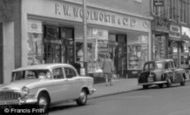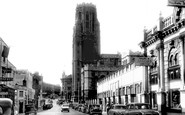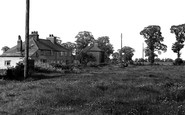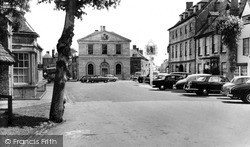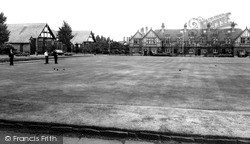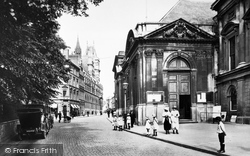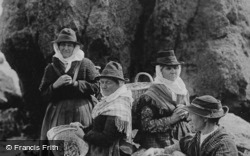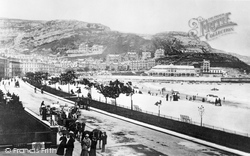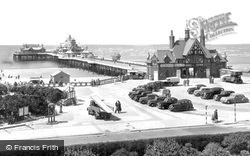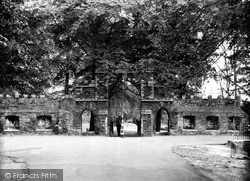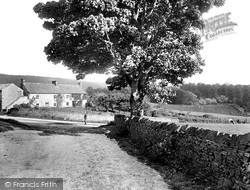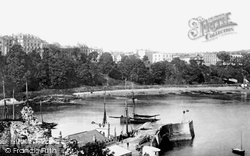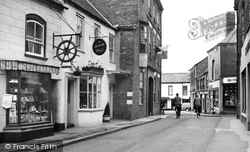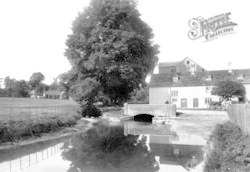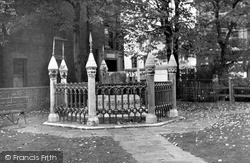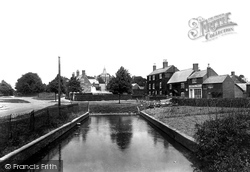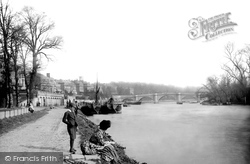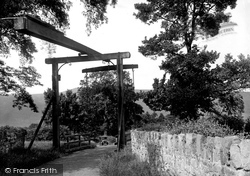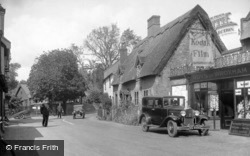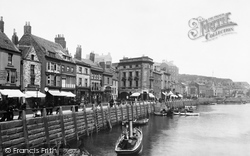Merry Christmas & Happy New Year!
Christmas Deliveries: If you placed an order on or before midday on Friday 19th December for Christmas delivery it was despatched before the Royal Mail or Parcel Force deadline and therefore should be received in time for Christmas. Orders placed after midday on Friday 19th December will be delivered in the New Year.
Please Note: Our offices and factory are now closed until Monday 5th January when we will be pleased to deal with any queries that have arisen during the holiday period.
During the holiday our Gift Cards may still be ordered for any last minute orders and will be sent automatically by email direct to your recipient - see here: Gift Cards
Places
11 places found.
Those places high-lighted have photos. All locations may have maps, books and memories.
Photos
54 photos found. Showing results 1,081 to 54.
Maps
494 maps found.
Books
25 books found. Showing results 1,297 to 1,320.
Memories
9,978 memories found. Showing results 541 to 550.
Norton Manor
I joined the army at the age of 15 and was posted to Norton Manor Camp on the outskirts of Taunton. At first we were not permitted to go out of the camp but when we did it was always Taunton that we visited. I have fond memories of ...Read more
A memory of Rumwell in 1961 by
Last Place Of Abode In The Uk
My name is Judith Buchanan, formerly High, and we used to live at 20 Cambridge Rd, Thornaby. This house remains firmly entrenched in my earliest childhood memory. I was seven years old when our family left ...Read more
A memory of Stockton-on-Tees in 1962 by
Part 7
There was no running hot water, no gas, no bathroom and no flushing toilets. Electricity was used for lighting and if you were lucky, a wireless set. Most sets were run from accumulators, a sort of battery, which you had to take to ...Read more
A memory of Middle Rainton in 1945 by
When I Was A Child
When I was a little girl I remember my nan Parker and I would go into Woolworth's and buy the broken biscuits. Now days that would seem so trivial, but back then it was a luxury and I never knew anything different. I now live ...Read more
A memory of Redditch in 1965 by
Driving Out Of Bristol
Centre of road, driving towards the camera in his brand new ivory Ford Consul Mk II reg. 441 AAE is my recently deceased father, Captain G.G.Liles of BOAC (ex-RAF).1920-2006. We lived in Brislington from 1949-1958, until ...Read more
A memory of Bristol in 1957 by
Marton
I attended Marton between 1961-1965. I am a catholic, so we went to church by car, as there was only a few of us. I remember the long walks on Sunday afternoon. The pictures on a friday night, girls on one side, boys on the other, with ...Read more
A memory of Whitegate in 1960 by
Memories Of Hulme
My name is Lynda (Howarth) and I lived in Hulme from 1943 until 1953. My Mum was Edith Woods, and she married Stanley Howarth. My mum used to live in Mary Street and then we moved to Junction Street, after the war. I ...Read more
A memory of Hulme in 1943 by
My Days At Heswall
I was on The Anne White Wing for 18 months and loved every minuite. I remember nurses called Dennis Sidebottom, Karen Gullick, and Steve Eastburn. I used to go to the hospital school during the week and I think my teacher was ...Read more
A memory of Heswall in 1980 by
The Doctor's Surgery
I remember the doctor used to visit the village once or twice a week & set up his surgery in Mrs Benton's house. Mrs Benton, (Alice, or was that her daughter?), lived in the cottage at the end of the row, furthest away in ...Read more
A memory of Bulphan in 1960 by
Shops And Shopkeepers In East Street ....St Marys Hall..
I remember the pram/toy shop on the corner, there was also a fabric shop - I think it was where Famished sandwich bar was (can't remember what it is called now..) I could buy a piece of ...Read more
A memory of Shoreham-By-Sea in 1968 by
Captions
2,019 captions found. Showing results 1,297 to 1,320.
The historic Bear Inn on the right with its brown bear pub sign was an old coaching inn, and dates back to the 13th century.
In the distance are the ruins of a once great mansion, Scotsborough, dating back to the 14th century.
The houses at the back of the green are a perfect illustration of the architectural style that has made Port Sunlight so famous.
The Hall dates back to 1678, and was the first public building to be constructed after the fire of 1675. The County Hall was designed by Sir Roger Norwich, who was MP for the town.
Note the basket of shrimps, the hats and scarves of their traditional dress and the larger basket one lady has on her back.
Llandudno stands back against the mass of the Great Orme's head, which shelters it from north winds, and on a neck of sand between two bays, which are so close together that in rough weather their spray
It is after World War II, and Britain is getting back into economic gear. The Pier Orchestra under Lionel Johns continues to entertain.
This archway and wall date back over two hundred years; it is known as Gannock Gate, and forms part of a huge park known as The Walks, where it was the perfect place for fashionable folk
Here sits a fortress dating back to Roman times. In 1170 the four knights who murdered Thomas à Becket in Canterbury Cathedral gathered here before carrying out their deadly deed.
This famous memorial, encased in iron, dates back to 1841 and marks the spot where King William Rufus, son of William the Conqueror, was accidentally killed by an arrow shot by the nobleman Sir Walter
A new road bypassed the village, and it has reverted back to its secluded charms. Its church, dedicated to St Edmund the Martyr, was built in the 12th century.
A glass and steel addition can be seen cantilevered from the back of the building, purposely built as the Excelsior Studios by photographer Charles Smith Allen.
But Berkeley's importance in former times goes back much further. In Saxon days this was a borough in its own right, and a Royal Mint was located in the town.
Witchampton was best known for its paper mill at the other end of the village, which dated back to at least 1786 and closed only a few years ago.
Originally known as Back Street, Maidenhead Street was a bustling centre of trade and commerce.
placed upon a stone plinth set within decorative railings right in the heart of Kingston outside the Kingston municipal offices in 1850, but as traffic increased in the 20th century it was moved back
This photograph shows this Domesday village, now much consumed by the tentacles of Market Harborough's suburbs, with its large irregular green and attractive houses, some dating back to 1567 and 1664,
The shops on the left bring back many memories, and F W Woolworth is there as well. Chorley Town Hall, with its clock and spire, show up (right) at the north end of the street.
Looking back upstream past the boathouses in front of the 1830s St Helena Terrace and The White Cross, we see a fine view of Richmond Bridge, which dates from the 1770s and is one of the Thames' finest
Models from 1934 onwards had the tank under the back of the car.
The warehouses of Boston have suffered in recent years; the ones on the right on the opposite bank have been converted into flats, but the distant one has been, like so many of its companions, demolished
In 1906 it was possible to hire a horse and carriage at Warwick for a trip to Kenilworth and back for 10s 6d, though with two horses the price went up to £1, including the driver's fee.
This charming village straddles the banks of the River Bure amidst beautiful marshland.
Looming on the skyline is the back of the Streonshalh Hotel; one can appreciate the extensive view that the hotel guests would have had.
Places (11)
Photos (54)
Memories (9978)
Books (25)
Maps (494)

